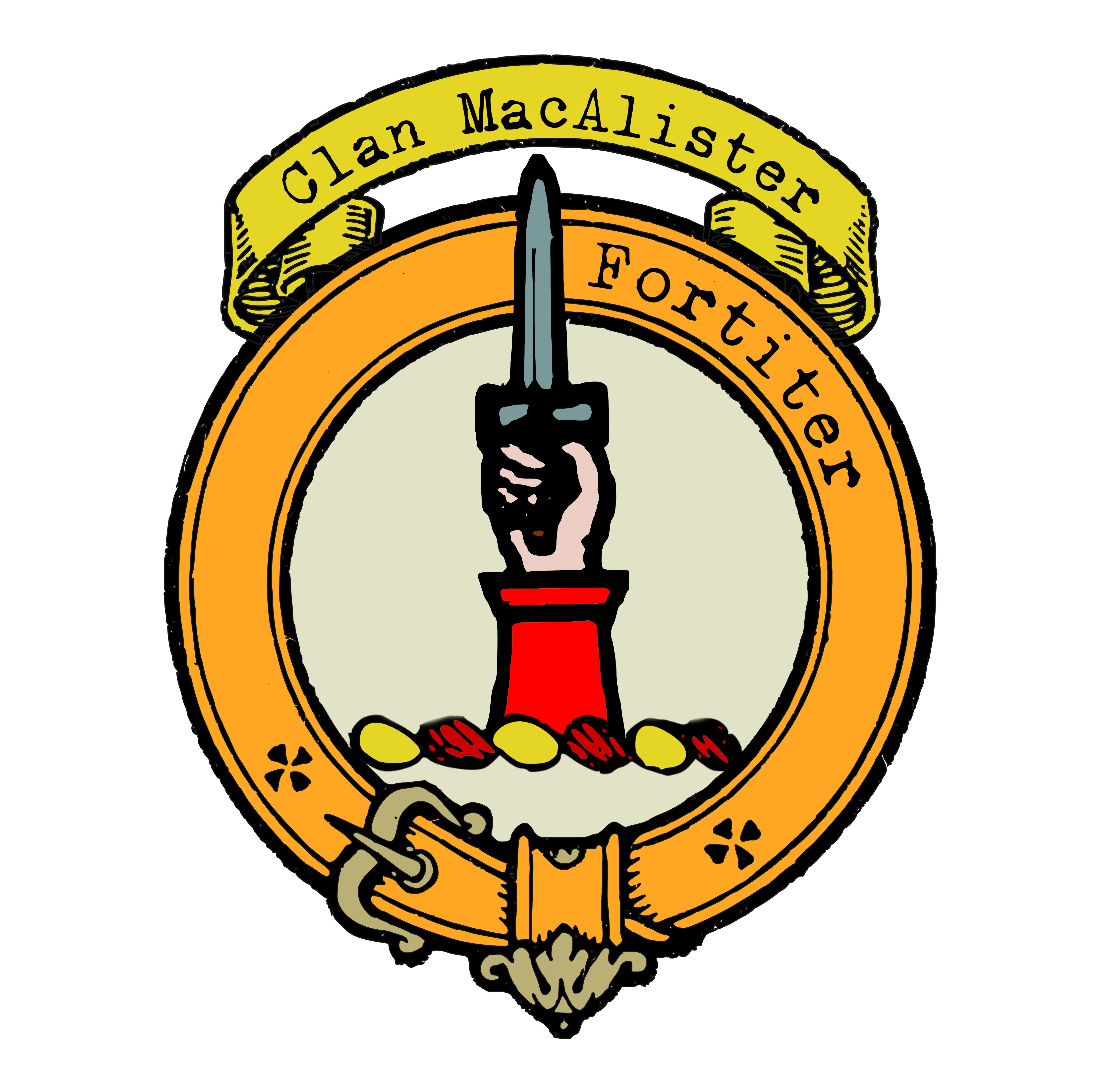Clan MacAlister
|
|
CREST: A dexter arm in amour erect, the hand holding a dagger in pale all Proper MOTTO: Fortiter TRANSLATION: Boldly VARIATIONS: McAlister |
 While some uncertainty surrounds their exact progenitor, it is widely accepted that Clan MacAlister descends from Alastair Mor, son of Donald of the Isles. Alastair Mor’s presence as a witness in a charter granted by his brother Angus, Lord of the Isles, to the Abbey of Paisley around 1253 signifies the clan’s early prominence. This marked the first instance of MacAlisters asserting their independence from the mighty Clan Donald. While some uncertainty surrounds their exact progenitor, it is widely accepted that Clan MacAlister descends from Alastair Mor, son of Donald of the Isles. Alastair Mor’s presence as a witness in a charter granted by his brother Angus, Lord of the Isles, to the Abbey of Paisley around 1253 signifies the clan’s early prominence. This marked the first instance of MacAlisters asserting their independence from the mighty Clan Donald.
Lands and Influence: The MacAlisters held a significant position despite their relatively small numbers. They sought to solidify their standing through strategic alliances with other noble houses. In 1481, Charles Macalister was appointed constable of the Castle of Tarbet and granted lands in Kintyre, further consolidating the clan’s influence. The Castle of Tarbert, which played a pivotal role during James IV’s naval campaigns, holds historical significance for the MacAlisters. Like many clans, the MacAlisters were not immune to internal conflicts. In 1598, Godfrey Macalister killed his tutor and guardian, Charles Macalister, sparking a family quarrel. The ensuing siege of Charles’ sons at their house in Askomull showcased the turbulent nature of those times. The MacAlisters were also known for their daring raids, such as the invasion of the island of Arran in 1600, where they seized the estates of John Montgomery of Skelmorlie. Another notable raid occurred two years later on the prosperous island of Bute, led by Archibald Macalister, the heir of Tarbert. The MacAlisters faced their share of legal challenges. In 1605, Archibald and John Macalister were ordered to appear before the Privy Council and faced fines if they did not comply. Alexander Macalister, along with Angus Og, leader of the Macdonalds of Islay, were found guilty of treason and met a grim fate. However, the MacAlisters’ resilience prevailed, and by 1623, Macalister of Loup held a prestigious position as a justice of the peace for Argyllshire. The MacAlisters extended their influence beyond their ancestral lands. Settling in Stirlingshire during the 14th century, they anglicized their Celtic name to Alexander. This shift led them to the estates of Menstrie, just a stone’s throw away from the renowned royal Castle of Stirling. Notably, William Alexander of Menstrie played a crucial role in promoting the colonization of Nova Scotia, earning rewards from the royal court and ascending to become the Earl of Stirling. Legacy and Clan Center: Over time, the MacAlisters sold off their Kintyre estates, and the present chief resides in England. Nevertheless, the legacy of Clan MacAlister endures, with Glenbarr Abbey serving as the modern clan center. The abbey houses numerous artifacts and mementos that preserve the memory and heritage of this illustrious Scottish clan. |
|
Citations:
|
|

Purchase @ Redbubble
Purchase @ Amazon.com
Purchase @ Amazon.co.uk

